#vol 137
Explore tagged Tumblr posts
Text

212 notes
·
View notes
Text

Corbeau devant le chemin du Moulin de Combeau, avec à l’arrière-plan le manoir de la Vove, Corbon — trois crayons sur papier gris, carnet nº 137, 23 mai 2023
#2023#corbeau#corvide#vol#manoir de la vove#manoir#la vove#corbon#le moulin de combeau#perche#orne#normandie#trois crayons#carnet 137#horizon#champ#profil
18 notes
·
View notes
Text
Medieval, Ã?vol, France

0 notes
Text

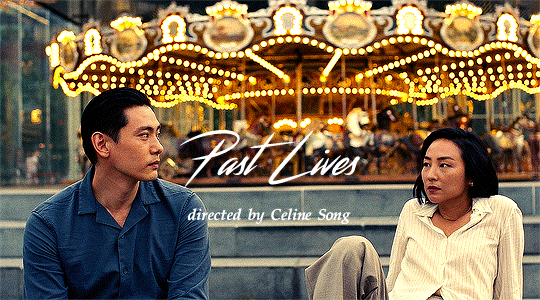


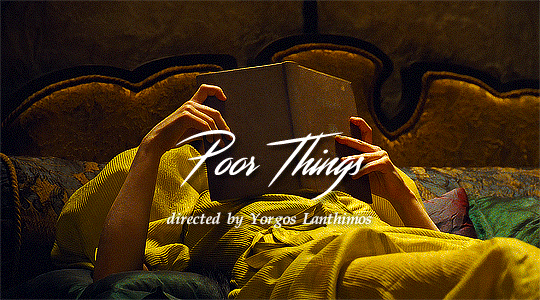


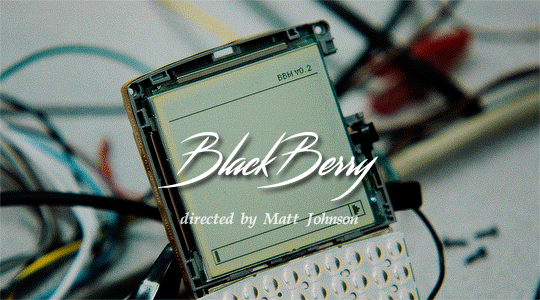

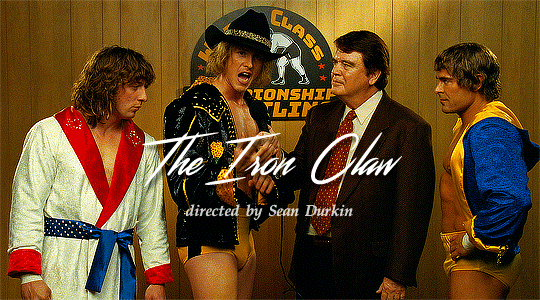

TOP 10
Past Lives
Spider-Man: Across the Spider-Verse
How to Blow Up a Pipeline
Poor Things
Oppenheimer
Barbie
BlackBerry
The Holdovers
The Iron Claw
Killers of the Flower Moon
MY LETTERBOXD Grade A 11. The Killer 12. Beau Is Afraid 13. Dream Scenario 14. Guardians of the Galaxy Vol. 3 15. Godzilla Minus One 16. American Fiction 17. They Cloned Tyrone 18. Evil Dead Rise 19. Eileen 20. The Artifice Girl 21. Teenage Mutant Ninja Turtles: Mutant Mayhem 22. Talk to Me 23. Reality 24. Leave the World Behind 25. A Thousand and One 26. Mission: Impossible – Dead Reckoning Part One 27. Are You There God? It’s Me, Margaret. 28. Theater Camp 29. Carmen 30. Merry Little Batman 31. Priscilla 32. Society of the Snow 33. Infinity Pool 34. Enys Men 35. Sanctuary 36. Rye Lane 37. Skinamarink 38. Monster 39. Anatomy of a Fall 40. Landscape with Invisible Hand 41. Reptile 42. Sisu 43. Pinball: The Man Who Saved the Game 44. No One Will Save You 45. Tetris 46. May December 47. The Zone of Interest 48. V/H/S/85 49. Dumb Money 50. El Conde 51. Arnold 52. Maestro 53. Napoleon 54. 20 Days in Mariupol 55. Influencer 56. The Creator 57. Origin 58. Thanksgiving 59. Next Goal Wins 60. The Boy and the Heron 61. Bottoms 62. Wonka
[Press Keep Reading For The Full Graded List]
Grade B
63. God Is a Bullet 64. No Hard Feelings 65. Joy Ride 66. Fair Play 67. Cocaine Bear 68. NYAD 69. Asteroid City 70. Nowhere 71. The Angry Black Girl and Her Monster 72. Divinity 73. The Equalizer 3 74. The Last Voyage of the Demeter 75. Venus 76. Butcher’s Crossing 77. Somewhere in Queens 78. The Persian Version 79. Boston Strangler 80. Polite Society 81. Miguel Wants to Fight 82. The Color Purple 83. The Royal Hotel 84. Saw X 85. All of Us Strangers 86. Fallen Leaves 87. Ferrari 88. Elemental 89. Peter Pan & Wendy 90. Renfield 91. Cat Person 92. Scream VI 93. The Hunger Games: The Ballad of Songbirds & Snakes 94. BS High 95. Blue Beetle 96. Huesera: The Bone Woman 97. When Evil Lurks 98. Dark Harvest 99. A Good Person 100. Final Cut 101. Knock at the Cabin 102. Quiz Lady 103. Leo 104. Air 105. The Super Mario Bros. Movie 106. Batman: The Doom That Came to Gotham 107. John Wick: Chapter 4 108. Beaten to Death 109. The Wrath of Becky 110. Passages 111. Transformers: Rise of the Beasts 112. Gran Turismo 113. 65 114. Sick 115. Sister Death 116. The Blackening 117. Please Don’t Destroy: The Treasure of Foggy Mountain 118. Flamin’ Hot 119. Nimona 120. Cobweb 121. Totally Killer 122. What’s Love Got to Do with It? 123. Sharper 124. Unseen 125. Dunki 126. Bird Box Barcelona 127. The Marvels 128. Shazam! Fury of the Gods
Grade C
129. Wildflower 130. Freelance 131. M3GAN 132. Strays 133. Sympathy for the Devil 134. Creed III 135. Chevalier 136. The Marsh King’s Daughter 137. A Haunting in Venice 138. The Little Mermaid 139. Silent Night 140. Master Gardener 141. The Flash 142. Fast X 143. The Pope’s Exorcist 144. Saltburn 145. Kandahar 146. Stand 147. Plane 148. Indiana Jones and the Dial of Destiny 149. Fingernails 150. Quicksand 151. Fool’s Paradise 152. Migration 153. Rustin 154. The Covenant 155. Good Burger 2 156. The Pod Generation 157. Alice, Darling 158. Insidious: The Red Door 159. Missing 160. Shotgun Wedding 161. You Hurt My Feelings 162. The Boogeyman 163. Showing Up 164. Aquaman and the Lost Kingdom 165. Champions 166. Consecration 167. The Nun II 168. Biosphere 169. House Party 170. The Exorcist: Believer 171. Big George Foreman 172. Dungeons & Dragons: Honor Among Thieves 173. Children of the Corn 174. The Beanie Bubble 175. Ant-Man and the Wasp: Quantumania
Grade F
176. Anyone But You 177. Marlowe 178. Paint 179. Extraction 2 180. It Lives Inside 181. Deliver Us 182. Trolls Band Together 183. Finestkind 184. Corner Office 185. Wish 186. Prisoner’s Daughter 187. Pain Hustlers 188. Foe 189. The Mother 190. Old Dads 191. Ghosted 192. Ruby Gillman, Teenage Kraken 193. Haunted Mansion 194. Mafia Mamma 195. Five Nights at Freddy’s 196. The Machine 197. Justice League: Warworld 198. We Have a Ghost 199. What Comes Around 200. Legion of Super-Heroes 201. The Boys in the Boat 202. Attachment 203. Operation Fortune: Ruse de Guerre 204. About My Father 205. You People 206. Meg 2: The Trench 207. Pathaan 208. Rebel Moon - Part One: A Child of Fire 209. Assassin 210. Dalíland 211. Vacation Friends 2
Bottom 10
212. Sound of Freedom 213. Winnie the Pooh: Blood and Honey 214. When You Finish Saving The World 215. Heart of Stone 216. Family Switch 217. Expend4bles 218. Sweetwater 219. Hypnotic 220. 80 for Brady 221. Spinning Gold
#kane52630#filmedit#top 10 2023#top 10 year#usergal#userlera#userkd#userbrittany#mikaeled#userconstance#userel#past lives#spider man across the spider verse#how to blow up a pipeline#poor things#oppenheimer#barbie#blackberry#the holdovers#the iron claw#killers of the flower moon#movie
1K notes
·
View notes
Text
Tyler and Tim Telling Batman To Leave Jason Alone Parallel
Batman Urban Lengends Vol 1 #2

Batman #137 (Gotham War)

#dc#dc comics#comics#comic books#batman urban legends#batman 2016#batman comics#chip zdarsky#media commentary#media analysis#comic pages#comic panels#tim drake#robin#red robin#jason todd#red hood#bruce wayne#batman#batfamily#batfam#batkids#batsiblings#batbros#bat brothers#character dynamics#found family#gotham war#batman 137#the gotham war
413 notes
·
View notes
Text
Scott & Jean comic reading order
Comic timeline & reading order + here
2000-2024
Scott
X-Men First Class(2007)
X-Men Season One(2012)
X-Men Origins – Cyclops(2010)
Cyclops (2001)
New X-Men(2001) #114-141
X-Men (2004) #157 -174
X-Men: Phoenix – Endsong (2005)
X-Men: Phoenix – Warsong (2006)
Young X-men (2008)
Astonishing X-Men Vol. 3 (2004)
X-Men: Endangered Species(2007)
X-Men : Messiah Complex(2007)/reading order
X-Men : Messiah War(2009)/reading order
Avengers/X-Men: Utopia(2009)/Utopia
Nation X (2010)/reading order
X-Men : Second Coming/reading order (2010)
Uncanny X-Men #534.1; 535–539 (2011)
Uncanny X-Men #540–544(2011)
Uncanny X-Men (vol. 2) #1 -10(2012)
X-Men: Prelude to Schism(2011)
X men Schism(2011)/reading order
Avengers vs. X-Men + AvX: Consequences /reading order
Uncanny X-Men Vol. 3 (2013)
All-New X-Men (2013)
Battle of the Atom
Cyclops Vol. 3 (2014)
Death of X #1 (2016) +
inhumans Vs X-Men
All-New X-Men Vol. 2 (2016)
Champions Vol. 2 (2016)
X-Men: Blue (2017)
X-Men: Gold #13 #14 #15
Phoenix Resurrection: The Return of Jean Grey (2018)
Uncanny X-Men v5 .Annual 1(2019)+ Uncanny X-Men #11 to #22(2019)
X-Men (2019)
House of x/power of x
X-Men by Jonathan Hickman Omnibus
X-Men (2024)
Jean
Phoenix Saga (1976) – X-Men #101-108
Dark Phoenix Saga (1980) – X-Men #129-137
New X-Men #114 -154(2001)
X-Men: Phoenix Endsong + Phoenix warsong (2005) &(2006)
All-New X-Men (2013)
Battle of the Atom
The Trial of Jean Grey
All-New X-Men Vol. 2 (2016)
Inhumans vs. X-Men
X-Men: Blue (2017)
Jean Grey (2017)
Generations: Phoenix & Jean Grey (2017)
Phoenix Resurrection: The Return of Jean Grey (2018)
X-Men: Red (2018)
X-Force (2019)
Giant-Size X-Men: Jean Grey & Emma Frost
Wolverine (2020) #1 #2 #17 #20
X-Men (2019-2024)
Hellfire Gala (2022-2023)
Immortal X-Men (2022)
Uncanny X-Men vol 5 (2019)
House of x (2019)/power of x (2019)
X-Force (2020)
Cable (2020)
X-Men: The Trial of Magneto (2021)
Dark Web (2022)
Dark Web: X-Men (2022)
Original X-Men (2023)
Jean Grey (2023)
X-Men: Forever (2024)
Fall of the House of X/Rise of the Powers of X(2024)
Phoenix (2024)




#screaming into the void#jean grey#scott summers#x men#marvel comics#comic rec#comic recommendations#madelyne pryor#alex summers#emma frost#logan howlett#kitty pryde#kurt wagner#illyana rasputin#quentin quire#ororo munroe#kamala khan#peter parker#erik lehnsherr#charles xavier#jubilation lee#raven darkholme#ben reilly
69 notes
·
View notes
Text

Charles Sims (1873-1928), 'The Coming of Spring', ''Connoisseur'', Vol. 35, #137, 1913 Source
#Charles Sims#Charles Henry Sims#british artists#british painters#the coming of spring#connoisseur#vintage art
215 notes
·
View notes
Text
Okay, commit and put down your preferred run. These are your only options.
Lobdell and his two writers got lumped because I don't think you can actually separate out the three of them over those issues.
#I think I can guess how this is going to go#but interested to see the spread between my top handful#also bless Denny but I cannot see many votes for him
70 notes
·
View notes
Text
O!Ciel's real name and why not knowing it matters.
! Spoiler warning !
I want to share a thought that came to me about a year ago. Many fans of the manga "Black Butler" often wonder about the real name of O!Ciel (later, the young master) and put forth various theories on this matter. It sometimes gets to the point where people leave the fandom for a while, returning only to ask about the name reveal, completely losing interest in other, more significant events in the manga. Then I asked myself: do we really need to know his real name?

With this ring on not, I — «Ciel Phantomhive», am the head of the Phantomhive family. (Vol. 1, ch. 2)
In this article I will mainly use screenshots with the official English translation by Yen Press, as it can be challenging to find Japanese ones. Additionally, my knowledge of the Japanese is extremely limited. However, I also consult various Japanese sources and materials available on the internet. I am aware that even the official translation may not always be accurate. Toboso puts a lot of meaning into the text, and some of it may get lost in translation. However, in the context of this topic, there should not be any problems.
First, let's touch on an equally important thing, the very essence of names. Our name is what defines who we are. It represents our identity, our individuality. When you know someone's name, it breaks down barriers and makes the person feel more open and honest. Additionally, there are charactonyms, which are commonly used in the media. Charactonym already provide the viewer or reader with some information about the character and give them a chance to reflect on the character's personality. However, if a character doesn't have a name, it becomes more difficult to read through them. Does this apply to the young master? Let's find out.

(Vol. 13, ch. 62)
From the very beginning the young master hid a lot from us: his controversial motives and a mysterious past that was gradually revealed in the smallest details until it reached a turning point. At that moment, the reader realized that they didn't really know anything about him. It turns out that the younger Phantomhive has been deceiving everyone for a long time, including you.
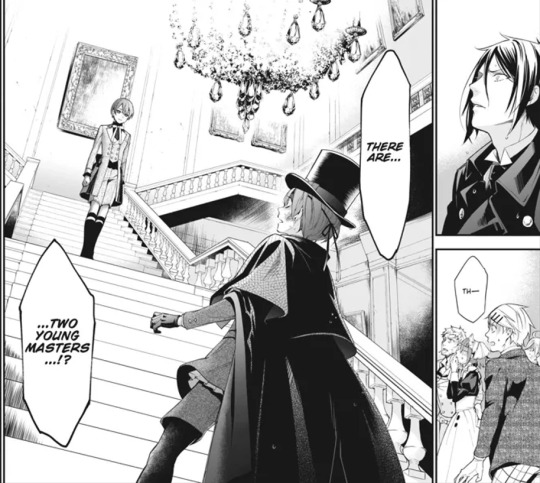
(Vol. 26, ch. 129)
Why did the young master took his older brother's name after his death?
I've often heard people make the following assumptions:
He was an unloved child and envied his older brother.
To avoid legal issues and to get the inheritance and title right away.
For Ciel's sake.
The first one can be immediately put aside. The assumption that the younger brother was not so loved in the family is refuted by the manga itself, you don't even need to dig far.
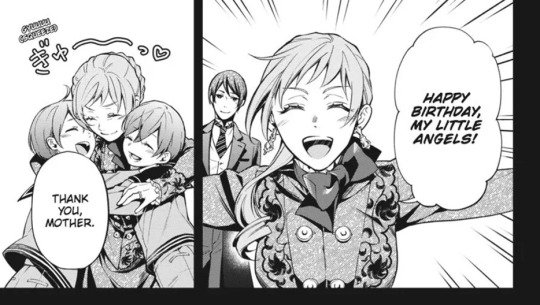
(Vol. 26, ch. 133)

My sweet nephews. (Vol 3, ch 10)
The young master was loved no less than Ciel. People often suggest that he is an "unloved younger son", basing their argument on the following frame:

The young master deluding himself, succumbing to the manipulations of the demon. (Vol. 27, ch. 137)
However, no one told him that he was unloved and that they would be upset if he comes back. (Edited. I do believe there was some pressure with the whole heir thing, which planted seeds of doubt in a little child, but overall his family did loved him) He compared himself to Ciel. He looked up to him, but at the same time, he felt inferior and didn't see his own strengths. Instead focusing on his weaknesses. It was precisely because this child was not capable of loving himself that he decided that the (self-proclaimed) "weak spare" should not have survived.
The second assumption also irrelevant, because the young master had no idea of becoming the first heir and taking on the role of the queen's watchdog. He didn't let the fact of not becoming an earl get to him. Instead, he decided on what he wanted to dedicate his future to, aiming to become a worthy younger son that everyone would be proud of.

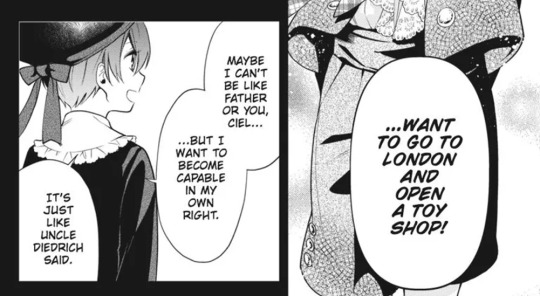
(Vol. 26, ch. 132)
And the third assumption is the one I personally follow!
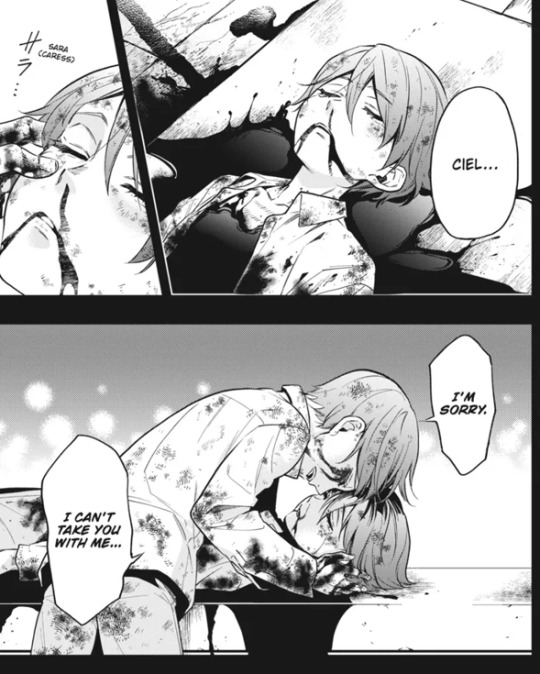
(Vol. 28, ch. 140)
The young master suffered a lot during that time time in the cult, which greatly weakened his mental state and worldview, but he wasn't a bad child. He loved his older brother, even more than himself. That's why he decided that only Ciel deserved to be saved. He buried his true self and became Ciel, strong and invincible, the kind of Ciel that his older brother could not become.

(Vol. 27, ch. 137)
And I think that at that moment everything we knew about the young master, his motivation and the name itself began to take on new meanings.

(Vol 2, ch. 8)
The younger brother is gone. He disappeared forever, along with the essence of the real Ciel. Only "Earl Ciel Phantomhive" remains...
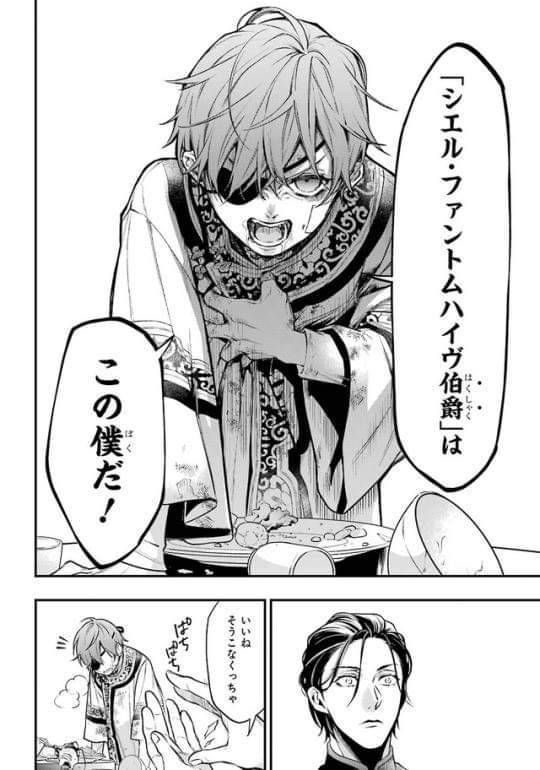
〞Earl Ciel Phantomhive〟— is I! (Vol. 28, ch. 147)
...And that's all we need to know.
Will the reveal of the young master's real name affect anything?
...No. It will just ruin all the charm and depth of this story, nothing more. The young master rose to prominence, becoming the owner of the esteemed company «Phantom» and the queen's watchdog. He took on the name Earl Ciel Phantomhive, leaving his past behind. After all, we cannot retrieve what we have lost. I am completely sure that the name will not be revealed, no matter how much some people would want to.
Other characters whose real names we don't know.
It's funny that while going on and off about the name of the young master, everyone seems to forget that there are still many characters in this story whose names we don't know. Without going far, we have Sebastian, Undertaker, most of the circus troupe. Moreover, we don't know if they have names at all. Take Sebastian as an example — he was given a name of the young master's dog. We know that this is not his true name, as he could have served many other people who gave him different names. Do we need to know the specific names? No, it doesn't affect anything. All that matters to us is that he is now Sebastian, the faithful dog of the young master.
I can only believe that the Undertaker's name will be revealed at some point in the future. It may be very significant in the context of his background.
And that's all. While being part of the fandom, I managed to see only one person who, like me, does not consider it necessary to know the young master's birth name. Therefore, I hope that someone else will find my thoughts on this matter interesting. Thank you for reading! (˶ᵔ ᵕ ᵔ˶)
#kuroshitsuji#black butler#o!ciel#r!ciel#name reveal#ciel phantomhive#analysis#manga#sebastian michaelis#rachel phantomhive#madame red#angelina dalles#we won't get name reveal so calm down
134 notes
·
View notes
Text
Yeah, I'm probably stretching the post size limit here. But this is part one of my reading list. It's mostly Superman and Batman stuff, with a mix of humour comics and tie-in comics near the bottom. I'm still not done writing it, by the way. Just so you know why I sometimes hate my brain for making me continue to write all this stuff. sigh...
Superman:
DC Deluxe Collections: Superman Vol. 1 (Action Comics #1-31, Superman #1-7 and New York World's Fair Comics #1-2)
DC Deluxe Collections: Superman Vol. 2 (Action Comics #32-50, Superman #8-15, World's Best Comics #1, World's Finest Comics #2-6 and Superman's Christmas Adventure #1)
DC Deluxe Collections: Superman Vol. 3 (Action Comics #48-65, Superman #16-24 and World's Finest Comics #6-10)
DC Deluxe Collections: Superman Vol. 4 (Action Comics #66-85, Superman #25-33, World's Finest Comics #11-18 and Superman's Christmas Adventure #2)
DC Deluxe Collections: Superman Vol. 5 (Action Comics #86-105, Superman #34-43 and World's Finest Comics #19-25)
DC Deluxe Collections: Superman Vol. 6 (Action Comics #106-125, Superman #44-54 and World's Finest Comics #26-36)
DC Deluxe Collections: Superman Vol. 7 (Action Comics #125-143, Superman #55-65 and World's Finest Comics #37-47)
DC Deluxe Collections: Superman Vol. 8 (Action Comics #144-160, Superman 66-76 and World's Finest Comics 48-60)
DC Deluxe Collections: Superman Vol. 9 (Action Comics #161-177, Superman #76-82 and World's Finest Comics #61-70)
DC Deluxe Collections: Superman Vol. 10 (Action Comics #178-190 and Superman #83-89)
DC Deluxe Collections: Superman Vol. 11 (Action Comics #191-215 and Superman #90-105)
DC Deluxe Collections: Superman Vol. 12 (Action Comics #216-240 and Superman #106-121)
DC Deluxe Collections: Superman Vol. 13 (Action Comics #241-265 and Superman #122-137)
DC Deluxe Collections: Superman Vol. 14 (Action Comics #266-290 and Superman #138-153)
DC Deluxe Collections: Superman Vol. 15 (Action Comics #291-314 and Superman #154-169)
DC Deluxe Collections: Superman Vol. 16 (Action Comics #315-339 and Superman #170-185)
DC Deluxe Collections: Superman Vol. 17 (Action Comics #340-361, Superman #186-201 and The Flash #175)
DC Deluxe Collections: Superman Vol. 18 (Action Comics #362-382 and Superman #202-217)
DC Deluxe Collections: Superman Vol. 19 (Action Comics #383-397 and Superman #218-232)
DC Deluxe Collections: Superman Vol. 20 (Action Comics #398-411 and Superman #233-248)
DC Deluxe Collections: Superman Vol. 21 (Action Comics #412-427 and Superman #249-264)
DC Deluxe Collections: Superman Vol. 22 (Action Comics #428-442 and Superman #265-282)
DC Deluxe Collections: Superman Vol. 23 (Action Comics #443-459 and Superman #283-299)
DC Deluxe Collections: Superman Vol. 24 (Action Comics #460-478, Superman #300-317 and DC Special Series #5)
DC Deluxe Collections: Superman Vol. 25 (Action Comics #479-496, Superman #318-335 and Superman Family #184-193)
DC Deluxe Collections: Superman Vol. 26 (Action Comics #497-514 and Superman #336-354)
DC Deluxe Collections: Superman Vol. 27 (Action Comics #515-533, Superman #355-372 and DC Special Series #26)
DC Deluxe Collections: Superman Vol. 28 (Action Comics #534-549, Superman #373-389, Superman annual #9 and Superman special #1)
DC Deluxe Collections: Superman Vol. 29 (Action Comics #550-570, Superman #390-409, Superman annual #10 and Superman special #2-3)
DC Deluxe Collections: Superman Vol. 30 (Action Comics #571-582, Superman #410-413, #416-422 and Superman annual #12)
Superboy:
DC Deluxe Collections: Superboy Vol. 1 (More Fun Comics #101-107, Adventure Comics #103-140 and Superboy #1-2)
DC Deluxe Collections: Superboy Vol. 2 (Adventure Comics #141-162 and Superboy #3-13)
DC Deluxe Collections: Superboy Vol. 3 (Adventure Comics #163-183 and Superboy #14-23)
DC Deluxe Collections: Superboy Vol. 4 (Adventure Comics #184-209 and Superboy #24-38)
DC Deluxe Collections: Superboy Vol. 5 (Adventure Comics #210-240 and Superboy #39-59)
DC Deluxe Collections: Superboy Vol. 6 (Adventure Comics #241-282 and Superboy #60-87)
DC Deluxe Collections: Superboy Vol. 7 (Adventure Comics #283-300 and Superboy #88-99)
DC Deluxe Collections: Superboy Vol. 8 (Adventure Comics #301-315 and Superboy #100-110)
DC Deluxe Collections: Superboy Vol. 9 (Superboy #111-124)
DC Deluxe Collections: Superboy Vol. 10 (Superboy #125-140)
DC Deluxe Collections: Superboy Vol. 11 (Superboy #141-166)
DC Deluxe Collections: Superman Vol. 12 (Superboy #167-182)
DC Deluxe Collections: Superboy Vol. 13 (Superboy #183-196)
DC Deluxe Collections: Superboy Vol. 14 (Adventure Comics #453-458, Superman Family #182, #191-198 and The New Adventures of Superboy #1)
DC Deluxe Collections: Superboy Vol. 15 (The New Adventures of Superboy #2-10 and Superboy Spectacular #1)
DC Deluxe Collections: Superboy Vol. 16 (The New Adventures of Superboy #11-20)
DC Deluxe Collections: Superboy Vol. 17 (The New Adventures of Superboy #21-31)
DC Deluxe Collections: Superboy Vol. 18 (The New Adventures of Superboy #32-41)
DC Deluxe Collections: Superboy Vol. 19 (The New Adventures of Superboy #42-54)
Supergirl:
DC Deluxe Collections: Supergirl Vol. 1 (Action Comics #252-307)
DC Deluxe Collections: Supergirl Vol. 2 (Action Comics #308-333, #335-340, #342, #344-346, #348-350, #353-354, #356-359, #361-372 and #374-376)
DC Deluxe Collections: Supergirl Vol. 3 (Adventure Comics #381-400)
DC Deluxe Collections: Supergirl Vol. 4 (Adventure Comics #401-424)
DC Deluxe Collections: Supergirl Vol. 5 (Supergirl #1-10)
DC Deluxe Collections: Supergirl Vol. 6 (Superman Family #165, #168, #171, #174, #177, 180, #182-183)
DC Deluxe Collections: Supergirl Vol. 7 (Superman Family #184-197)
DC Deluxe Collections: Supergirl Vol. 8 (Superman Family #198-222 and Detective Comics #508-510)
DC Deluxe Collections: Supergirl Vol. 9 (Superman #376 and The New Adventures of Supergirl #1-12)
DC Deluxe Collections: Supergirl Vol. 10 (The New Adventures of Supergirl #13-23)
Jimmy Olson:
DC Deluxe Collections: Superman's Pal, Jimmy Olson Vol. 1 (Superman's Pal, Jimmy Olson #1-10)
DC Deluxe Collections: Superman's Pal, Jimmy Olson Vol. 2 (Superman's Pal, Jimmy Olson #11-21)
DC Deluxe Collections: Superman's Pal, Jimmy Olson Vol. 3 (Superman's Pal, Jimmy Olson #22-31)
DC Deluxe Collections: Superman's Pal, Jimmy Olson Vol. 4 (Superman's Pal, Jimmy Olson #31-40)
DC Deluxe Collections: Superman's Pal, Jimmy Olson Vol. 5 (Superman's Pal, Jimmy Olson #41-51)
DC Deluxe Collections: Superman's Pal Jimmy Olson, Vol. 6 (Superman's Pal, Jimmy Olson #51-60)
Superman's Pal, Jimmy Olson Vol. 7 (Superman's Pal, Jimmy Olson #61-70)
DC Deluxe Collections: Superman's Pal, Jimmy Olson Vol. 8 (Superman's Pal, Jimmy Olson #71-80)
DC Deluxe Collections: Superman's Pal, Jimmy Olson Vol. 9 (Superman's Pal, Jimmy Olson #81-90)
DC Deluxe Collections: Superman's Pal, Jimmy Olson Vol. 10 (Superman's Pal, Jimmy Olson #91-100)
DC Deluxe Collections: Superman's Pal, Jimmy Olson Vol. 11 (Superman's Pal, Jimmy Olson #101-110)
DC Deluxe Collections: Superman's Pal, Jimmy Olson Vol. 12 (Superman's Pal, Jimmy Olson #111-123)
DC Deluxe Collections: Superman's Pal, Jimmy Olson Vol. 13 (Superman's Pal, Jimmy Olson #124-132)
DC Deluxe Collections: Superman's Pal, Jimmy Olson Vol. 14 (Superman's Pal, Jimmy Olson #149-163)
DC Deluxe Collections: Superman's Pal, Jimmy Olson Vol. 15 (Superman Family #164, #167, #170, #173, #176, #179, #182-190)
DC Deluxe Collections: Superman's Pal, Jimmy Olson Vol. 16 (Superman Family #191-200)
DC Deluxe Collections: Superman's Pal, Jimmy Olson Vol. 17 (Superman Family #201-222 and Action Comics #563)
Lois Lane:
DC Deluxe Collections: Superman's Girl Friend, Lois Lane Vol. 1 (Showcase #9-10 and Superman's Girl Friend, Lois Lane #1-8)
DC Deluxe Collections: Superman's Girl Friend, Lois Lane Vol. 2 (Superman's Girl Friend, Lois Lane #9-18)
DC Deluxe Collections: Superman's Girl Friend, Lois Lane Vol. 3 (Superman's Girl Friend, Lois Lane #19-28)
DC Deluxe Collections: Superman's Girl Friend, Lois Lane Vol. 4 (Superman's Girl Friend, Lois Lane #29-38)
DC Deluxe Collections: Superman's Girl Friend, Lois Lane Vol. 5 (Superman's Girl Friend, Lois Lane #39-48)
DC Deluxe Collections: Superman's Girl Friend, Lois Lane Vol. 6 (Superman's Girl Friend, Lois Lane #49-58)
DC Deluxe Collections: Superman's Girl Friend, Lois Lane Vol. 7 (Superman's Girl Friend, Lois Lane #59-68)
DC Deluxe Collections: Superman's Girl Friend, Lois Lane Vol. 8 (Superman's Girl Friend, Lois Lane #69-79)
DC Deluxe Collections: Superman's Girl Friend, Lois Lane Vol. 9 (Superman's Girl Friend, Lois Lane #80-90)
DC Deluxe Collections: Superman's Girl Friend, Lois Lane Vol. 10 (Superman's Girl Friend, Lois Lane #91-100)
DC Deluxe Collections: Superman's Girl Friend, Lois Lane Vol. 11 (Superman's Girl Friend, Lois Lane #101-110)
DC Deluxe Collections: Superman's Girl Friend, Lois Lane Vol. 12 (Superman's Girl Friend, Lois Lane #111, 113-114 and 120-127)
DC Deluxe Collections: Superman's Girl Friend, Lois Lane Vol. 13 (Superman's Girl Friend, Lois Lane #128-137)
DC Deluxe Collections: Superman's Girl Friend, Lois Lane Vol. 14 (Superman Family #166, #169, #172, #175, #181-190)
DC Deluxe Collections: Superman's Girl Friend, Lois Lane Vol. 15 (Superman Family #191-200)
DC Deluxe Collections: Superman's Girl Friend, Lois Lane Vol. 16 (Superman Family #201-222, The New Adventures of Supergirl #2-12 and The Brave and The Bold #175)
Rose and the Thorn:
DC Deluxe Collections: Rose and the Thorn Vol. 1 (Superman's Girl Friend, Lois Lane #105-130 and The Brave and The Bold #188-189)
Krypto:
DC Deluxe Collections: Krypto the Superdog Vol. 1 (Adventure Comics #210, #214, #220 and #267, Action Comics #462, #467 and Superman Family #182-192)
Clark Kent:
DC Deluxe Collections: The Private Life of Clark Kent Vol. 1 (Superman #247, #254, #256, #258, #262, #267, #270, #273, #277, #280, #285, #287, #289, #292 and #294)
DC Deluxe Collections: The Private Life of Clark Kent Vol. 2 (Action Comics #459, #464, #469, #471, #474, #477, Superman #328, #371, #373 and Superman Family #195-197 and 199-215)
Superman Family:
DC Deluxe Collections: The Superman Family Vol. 1 (Morgan Edge story from Action Comics #468, Steve Lombard stories from Action Comics #465 and #472, Lori Lemaris story from Action Comics #475, Perry White stories from Action Comics #461 and Superman Family #183, Mister Mxyzptlk stories from Action Comics #460, #563 and #574 and a Lex Luthor story from Action Comics #486)
Superman: The In-Between Years:
DC Deluxe Collections: Superman: The In-Between Years Vol. 1 (Superman: The In-between Years stories from Superman #359, #362, #365-366, #370, #374 and Superman: The Secret Years #1-4)
Bizarro:
DC Deluxe Collections: Tales of the Bizarro World Vol. 1 (Adventure Comics #285-299)
The Fabulous World of Krypton:
DC Deluxe Collections: The Fabulous World of Krypton Vol. 1 (Superman #233-234, #236, #238, #240, #243, #246, #248, #251, #255, #257, #260, #263-264, #266, #268, #271, #275, #279, #282, #286, #352, #356, #360, #367, #375 and Superman Family #182)
DC Deluxe Collections: The Fabulous World of Krypton Vol. 2 (World of Krypton #1-3, Krypton Chronicles #1-3, The Phantom Zone #1-4 and DC Comics Presents #97)
Nightwing and Flamebird:
DC Deluxe Collections: Nightwing and Flamebird Vol. 1 (Superman Family #173 and #183-194)
Mr. and Mrs. Superman:
DC Deluxe Collections: Mr and Mrs. Superman Vol. 1 (Superman #327, #329 and Superman Family #195-196, #198-199 and #201-222)
Superman of 2020:
DC Deluxe Collections: Superman of 2020 Vol. 1 (Superman #354-355, #357, #361, #364, #368 and #372)
Legion of Superheroes:
DC Deluxe Collections: The Legion of Superheroes Vol. 1 (Action Comics #267, #276, #287, #289, Adventure Comics #247, #267, #282, #290, 293, #300-305, Superboy #86, #89, #98 and Superman #147)
DC Deluxe Collections: The Legion of Superheroes Vol. 2 (Adventure Comics #306-317 and Superman's Pal, Jimmy Olson #72)
DC Deluxe Collections: The Legion of Superheroes Vol. 3 (Adventure Comics #318-328, Superman's Pal, Jimmy Olsen #76 and Superboy #117)
DC Deluxe Collections: The Legion of Superheroes Vol. 4 (Adventure Comics #329-339 and Superboy #124-125)
DC Deluxe Collections: The Legion of Superheroes Vol. 5 (Adventure Comics #340-349)
DC Deluxe Collections: The Legion of Superheroes Vol. 6 (Adventure Comics #350-353, #356, #358)
DC Deluxe Collections: The Legion of Superheroes Vol. 7 (Adventure Comics #359-367 and Superman's Pal, Jimmy Olsen #106)
DC Deluxe Collections: The Legion of Superheroes Vol. 8 (Adventure Comics #368-376 and Superboy #147)
DC Deluxe Collections: The Legion of Superheroes Vol. 9 (Adventure Comics #377-380, Action Comics #378-387 and #389-392)
DC Deluxe Collections: The Legion of Superheroes Vol. 10 (Adventure Comics #403, Superboy #172-173, #176, #183-184, #188, #190-191, #193, #195 and #197-202)
DC Deluxe Collections: The Legion of Superheroes Vol. 11 (Superboy #203-212)
DC Deluxe Collections: The Legion of Superheroes Vol. 12 (Superboy #213-223 and Karate Kid #1)
DC Deluxe Collections: The Legion of Superheroes Vol. 13 (Superboy #224-233)
DC Deluxe Collections: The Legion of Superheroes Vol. 14 (Superboy #234-240, All-New Collectors Edition #55 and DC Super-Stars #17)
DC Deluxe Collections: The Legion of Superheroes Vol. 15 (Superboy #241-258 and DC Comics Presents #13-14)
DC Deluxe Collections: The Legion of Superheroes Vol. 16 (Legion of Superheroes #263-264, #266-275 and DC Special Series #21)
DC Deluxe Collections: The Legion of Superheroes Vol. 17 (Legion of Superheroes #276-283 and Secrets of the Legion of Superheroes #1-3)
DC Deluxe Collections: The Legion of Superheroes Vol. 18 (Legion of Superheroes #286-295, annual #1 and The Best of DC #24)
DC Deluxe Collections: The Legion of Superheroes Vol. 19 (Legion of Superheroes #296-313 and annual #2)
Karate Kid:
DC Deluxe Collections: Karate Kid Vol. 1 (Karate Kid #1-15 and Kamandi #58)
Batman:
DC Deluxe Collections: Batman Vol. 1 (Detective Comics #36, 38-55, Batman #1-7, New York World's Fair Comics #2, World's Best Comics #1 and World's Finest Comics #2-3)
DC Deluxe Collections: Batman Vol. 2 (Detective Comics #58-74, Batman #8-15 and World's Finest Comics #4-9)
DC Deluxe Collections: Batman Vol. 3 (Detective Comics #75-91, Batman #16-25 and World's Finest Comics #10-14)
DC Deluxe Collections: Batman Vol. 4 (Detective Comics #92-112, Batman #26-35 and World's Finest Comics #15-22)
DC Deluxe Collections: Batman Vol. 5 (Detective Comics #113-132, Batman #36-45 and World's Finest Comics #23-32)
DC Deluxe Collections: Batman Vol. 6 (Detective Comics #133-153, Batman #46-55 and World's Finest Comics #33-42)
DC Deluxe Collections: Batman Vol. 7 (Detective Comics #154-173, Batman #56-66 and World's Finest Comics #43-53)
DC Deluxe Collections: Batman Vol. 8 (Detective Comics #174-191, Batman #67-75 and World's Finest Comics #54-62)
DC Deluxe Collections: Batman Vol. 9 (Detective Comics #192-210, Batman #76-85 and World's Finest Comics #63-70)
DC Deluxe Collections: Batman Vol. 10 (Detective Comics #211-232 and Batman #86-100)
DC Deluxe Collections: Batman Vol. 11 (Detective Comics #233-257 and Batman #101-116)
DC Deluxe Collections: Batman Vol. 12 (Detective Comics #258-281 and Batman #117-132)
DC Deluxe Collections: Batman Vol. 13 (Detective Comics #282-303 and Batman #133-148)
DC Deluxe Collections: Batman Vol. 14 (Detective Comics #304-326 and Batman #149-163)
DC Deluxe Collections: Batman Vol. 15 (Detective Comics #327-347 and Batman #164-178)
DC Deluxe Collections: Batman Vol. 16 (Detective Comics #348-371 and Batman #179-198)
DC Deluxe Collections: Batman Vol. 17 (Detective Comics #372-391 and Batman #199-216)
DC Deluxe Collections: Batman Vol. 18 (Detective Comics #396, #399-400, #402, #404, #407-408 and Batman #219-220, #222-223, #226, #229 and #231)
DC Deluxe Collections: Batman Vol. 19 (Detective Comics #415-418, #424-425, #428-429, #432, #434-435 and Batman #232, #234-235, #239, #241 and #247)
DC Deluxe Collections: Batman Vol. 20 (Detective Comics #442, #444-448, #452-454 and Batman #251-260, #262-263 and #266-268)
DC Deluxe Collections: Batman Vol. 21 (Detective Comics #460-476, Batman #272-277, #279-288 and #291-297, DC Special #28 and DC Special Series #1)
DC Deluxe Collections: Batman Vol. 22 (Detective Comics #477-479, #483-484, #486, Batman #301-319 and Batman Family #17 and #20)
DC Deluxe Collections: Batman Vol. 23 (Detective Comics #488, #491-505, Batman #321-324, #326-329, #336-337 and DC Special Series #21)
DC Deluxe Collections: Batman Vol. 24 (Detective Comics #506-526 and Batman #341-359)
DC Deluxe Collections: Batman Vol. 25 (Detective Comics #527-547, Batman #360-381 and Batman Special #1)
DC Deluxe Collections: Batman Vol. 26 (Detective Comics #548-567, Batman #382-400 and Batman annual #10)
Robin:
DC Deluxe Collections: Robin Vol. 1 (Star Spangled Comics #65-85)
DC Deluxe Collections: Robin Vol. 2 (Star Spangled Comics #86-105)
DC Deluxe Collections: Robin Vol. 3 (Star Spangled Comics #106-130)
DC Deluxe Collections: Robin Vol. 4 (Detective Comics #390-391, #400-403, Batman #192, #202, #227, #229, #230-231, #234-236, #239-242, World's Finest Comics #200 and Justice League of America #91-92)
DC Deluxe Collections: Robin Vol. 5 (Batman #244-245, #248-250, #252, 254 and Detective Comics #445, #447, #450-451)
DC Deluxe Collections: Robin Vol. 6 (Batman Family #1, #3-9, #11-20, Detective Comics #481-493, Batman #333, #337-339 and DC Comics Presents #31 and #58)
Batgirl:
DC Deluxe Collections: Batgirl Vol. 1 (Detective Comics #359, #363, #369, #371, #384-385, #388-389, 392-393, #396-397, #400-401, #404-424, Batman #197, Justice League of America #60, Superman #268, #279 and Superman Family #171)
DC Deluxe Collections: Batgirl Vol. 2 (Batman Family #1, #3-7, #9-20 and DC Comics Presents #19)
DC Deluxe Collections: Batgirl Vol. 3 (Detective Comics #481-499, #501-502 and #508-510)
The Joker:
DC Deluxe Collections: The Joker Vol. 1 (Batman #251, #260, and The Joker #1-10)
Catwoman:
DC Deluxe Collections: Catwoman Vol. 1 (Batman #345-346, #348-349, #350-351 and Detective Comics #520)
Two-Face:
DC Deluxe Collections: Two-Face Vol. 1 (Batman #81, #234, #258, Detective Comics #66, #68, #80 and DC Super-Stars #14)
Man-Bat and Jason Bard:
DC Deluxe Collections: Man-Bat and Jason Bard Vol. 1 (Man-Bat stories from Detective Comics #400, #402, #407, #416, #429, Batman #254 and Jason Bard stories from Detective Comics #425, #427, #429, #431, #433 and #435)
DC Deluxe Collections: Man-Bat and Jason Bard Vol. 2 (Detective Comics #458-459, #481, #485, #492, Batman Family #11-20 and Man-Bat #1-2)
Batman Family:
DC Deluxe Collections: Batman Family Vol. 1 (Untold Legends of the Batman #1-3, Bruce Wayne stories from Batman #304 and Detective Comics #483, Bat-Mite stories from Detective Comics #482 and The Brave and The Bold #200, Alfred stories from Detective Comics #486, #489, Commissioner Gordon story from Detective Comics #489 and Commissioner Gordon and Alfred story from Batman Family #11)
Superman & Batman:
DC Deluxe Collections: Superman & Batman: World's Finest Vol. 1 (Superman #76 and World's Finest Comics #71-94)
DC Deluxe Collections: Superman & Batman: World's Finest Vol. 2 (World's Finest Comics #95-116)
DC Deluxe Collections: Superman and Batman: World's Finest Vol. 3 (World's Finest Comics #117-131)
DC Deluxe Collections: Superman and Batman: World's Finest Vol. 4 (World's Finest Comics #132-141)
DC Deluxe Collections: Superman and Batman: World's Finest Vol. 5 (World's Finest Comics #142-153)
DC Deluxe Collections: Superman and Batman: World's Finest Vol. 6 (World's Finest Comics #154-164)
DC Deluxe Collections: Superman and Batman: World's Finest Vol. 7 (World's Finest Comics #165-177)
DC Deluxe Collections: Superman and Batman: World's Finest Vol. 8 (World's Finest Comics #178-197)
DC Deluxe Collections: Superman and Batman: World's Finest Vol. 9 (World's Finest Comics #217-220, #223, #225-227, #232 and #234)
DC Deluxe Collections: Superman and Batman: World's Finest Vol. 10 (World's Finest Comics #235-237, #239-240 and #243-249)
DC Deluxe Collections: Superman and Batman: World's Finest Vol. 11 (World's Finest Comics #250-260)
DC Deluxe Collections: Superman and Batman: World's Finest Vol. 12 (World's Finest Comics #261-262 and #264-270)
DC Deluxe Collections: Superman and Batman: World's Finest Vol. 13 (World's Finest Comics #271-276 and #278-281)
DC Deluxe Collections: Superman and Batman: World's Finest Vol. 14 (World's Finest Comics #282-291)
DC Deluxe Collections: Superman and Batman: World's Finest Vol. 15 (World's Finest Comics #292-293 and #296-302)
DC Deluxe Collections: Superman and Batman: World's Finest Vol. 16 (World's Finest Comics #303-313)
DC Deluxe Collections: Superman and Batman: World's Finest Vol. 17 (World's Finest Comics #314-323)
DC Team-Ups:
DC Deluxe Collections: DC Team-Ups Vol. 1 (The Brave and The Bold #50-51, #53, #55-56, #61-63, #65-66 and #72-73)
Super-Sons:
DC Deluxe Collections: Super-Sons Vol. 1 (World's Finest Comics #154, #157, #215-216, #221-222, #224, #228, #230-231, #233, #238 and #242)
Batman Team-Ups:
DC Deluxe Collections: Batman Team-Ups Vol. 1 (The Brave and The Bold #59, #64, #67-71, #74-76)
DC Deluxe Collections: Batman Team-Ups Vol. 2 (The Brave and The Bold #77-86)
DC Deluxe Collections: Batman Team-Ups Vol. 3 (The Brave and The Bold #87-96)
DC Deluxe Collections: Batman Team-Ups Vol. 4 (The Brave and The Bold #97-106)
DC Deluxe Collections: Batman Team-Ups Vol. 5 (The Brave and The Bold #107-116)
DC Deluxe Collections: Batman Team-Ups Vol. 6 (The Brave and The Bold #117-126)
DC Deluxe Collections: Batman Team-Ups Vol. 7 (The Brave and The Bold #127-136 and DC Special Series #8)
DC Deluxe Collections: Batman Team-Ups Vol. 8 (The Brave and The Bold #137-145 and Batman Family #20)
DC Deluxe Collections: Batman Team-Ups Vol. 9 (The Brave and The Bold #146-155)
DC Deluxe Collections: Batman Team-Ups Vol. 10 (The Brave and The Bold #156-165)
DC Deluxe Collections: Batman Team-Ups Vol. 11 (The Brave and The Bold #166-175)
DC Deluxe Collections: Batman Team-Ups Vol. 12 (The Brave and The Bold #176-185)
DC Deluxe Collections: Batman Team-Ups Vol. 13 (The Brave and The Bold #186-192 and #194-200)
Superman Team-Ups:
DC Deluxe Collections: Superman Team-Ups Vol. 1 (World's Finest Comics #198-214)
DC Deluxe Collections: Superman Team-Ups Vol. 2 (DC Comics Presents #1-9 and All-New Collectors Edition #58)
DC Deluxe Collections: Superman Team-Ups Vol. 3 (DC Comics Presents #10-19)
DC Deluxe Collections: Superman Team-Ups Vol. 4 (DC Comics Presents #20-30)
DC Deluxe Collections: Superman Team-Ups Vol. 5 (DC Comics Presents #31-40)
DC Deluxe Collections: Superman Team-Ups Vol. 6 (DC Comics Presents #41-49 and annual #1)
DC Deluxe Collections: Superman Team-Ups Vol. 7 (DC Comics Presents #50-59)
DC Deluxe Collections: Superman Team-Ups Vol. 8 (DC Comics Presents #60-68 and annual #2)
DC Deluxe Collections: Superman Team-Ups Vol. 9 (DC Comics Presents #69-76 and annual #3)
DC Deluxe Collections: Superman Team-Ups Vol. 10 (DC Comics Presents #77-84 and annual #4)
DC Deluxe Collections: Superman Team-Ups Vol. 11 (DC Comics Presents #89-97)
Superfriends:
DC Deluxe Collections: Superfriends Vol. 1 (Limited Collectors' Edition #41 and Superfriends #1-10)
DC Deluxe Collections: Superfriends Vol. 2 (Superfriends #11-20)
DC Deluxe Collections: Superfriends Vol. 3 (Superfriends #20-29)
DC Deluxe Collections: Superfriends Vol. 4 (Superfriends #30-39)
DC Deluxe Collections: Superfriends Vol. 5 (Superfriends #40-47 and DC Comics Presents #46)
Angel and the Ape:
DC Deluxe Collections: Angel and The Ape Vol. 1 (Showcase #77, Angel and The Ape #1-3 and Meet Angel #4-7)
The Inferior Five:
DC Deluxe Collections: The Inferior Five Vol. 1 (Showcase #62-63 and Inferior Five #1-4)
DC Deluxe Collections: The Inferior Five Vol. 2 (Inferior Five #5-12)
Captain Carrot:
DC Deluxe Collections: Captain Carrot and his Amazing Zoo-Crew Vol. 1 (New Teen Titans #16, Captain Carrot and his Amazing Zoo-Crew #1-20 and Captain Carrot and his Amazing Zoo-Crew: The Oz-Wonderland War #1-3)
DCAU Batman:
DC Deluxe Collections: The Batman Adventures Vol. 1 (Batman Adventures #1-10)
DC Deluxe Collections: The Batman Adventures Vol. 2 (Batman Adventures #11-20)
DC Deluxe Collections: The Batman Adventures Vol. 3 (Batman Adventures #22-27 and annual #1)
DC Deluxe Collections: The Batman Adventures Vol. 4 (Batman Adventures #28-36, annual #2 and Batman Adventures Holiday Special #1 and Batman Adventures: Mad Love #1)
DC Deluxe Collections: The Batman Adventures Vol. 5 (The Batman and Robin Adventures #1-7, #9-11)
DC Deluxe Collections: The Batman Adventures Vol. 6 (The Batman and Robin Adventures #12-21)
DC Deluxe Collections: The Batman Adventures Vol. 7 (The Batman and Robin Adventures #22-25, annual #2, The Batman and Superman Adventures: World's Finest and The Batman and Robin Adventures: Subzero)
DC Deluxe Collections: The Batman Adventures Vol. 8 (Batman: Gotham Adventures #1-10 and The Batgirl Adventures #1)
DC Deluxe Collections: The Batman Adventures Vol. 9 (Batman: Gotham Adventures #11-19 and #21)
DC Deluxe Collections: The Batman Adventures Vol. 10 (Batman: Gotham Adventures #22-31)
DC Deluxe Collections: The Batman Adventures Vol. 11 (Batman: Gotham Adventures #32-41)
DC Deluxe Collections: The Batman Adventures Vol. 12 (Batman: Gotham Adventures #42-51)
DC Deluxe Collections: The Batman Adventures Vol. 13 (Batman: Gotham Adventures #52, #54-60)
DC Deluxe Collections: The Batman Adventures Vol. 14 (Batman Adventures Vol. 2 #1-3 and #9-16)
DCAU Superman:
DC Deluxe Collections: The Superman Adventures Vol. 1 (Superman Adventures #1-9 and #11-12)
DC Deluxe Collections: The Superman Adventures Vol. 2 (Superman Adventures #13-23, annual #1 and Superman Adventures Special: Superman vs Lobo)
DC Deluxe Collections: The Superman Adventures Vol. 3 (Superman Adventures #24-33 and Superman Adventures Special: Dimension of the Dark Shadows)
DC Deluxe Collections: The Superman Adventures Vol. 4 (Superman Adventures #34, #36-45)
DC Deluxe Collections: The Superman Adventures Vol. 5 (Superman Adventures #47-56)
DC Deluxe Collections: The Superman Adventures Vol. 6 (Superman Adventures #57-66)
DCAU Batman and Superman:
DC Deluxe Collections: Batman and Superman Vol. 1 (Superman and Batman Magazine #1-8)
DCAU Justice League:
DC Deluxe Collections: Justice League Vol. 1 (Justice League Adventures #1-10)
DC Deluxe Collections: Justice League Vol. 2 (Justice League Adventures #11-20)
DC Deluxe Collections: Justice League Vol. 3 (Justice League Adventures #21-34)
DCAU Misc:
DC Deluxe Collections: Tales of the DCAU Vol. 1 (Adventures in the DC Universe #1-8 and annual #1)
#good luck reading all this#i know it's probably formatted like a disaster#not to mention it's excessive length#dc#dc comics#comic books#comics#reading list#reading lists#comic reading list#superman#superman family#superfamily#superman comics#batman#batman comics#batman family#dc reading list#reading order#dcau#dcau comics#autism#asd#neurodivergent#adhd#autistic#my thoughts
22 notes
·
View notes
Text
The Bat Family Timeline and Ages (Post-Crisis and New Earth) with Sources
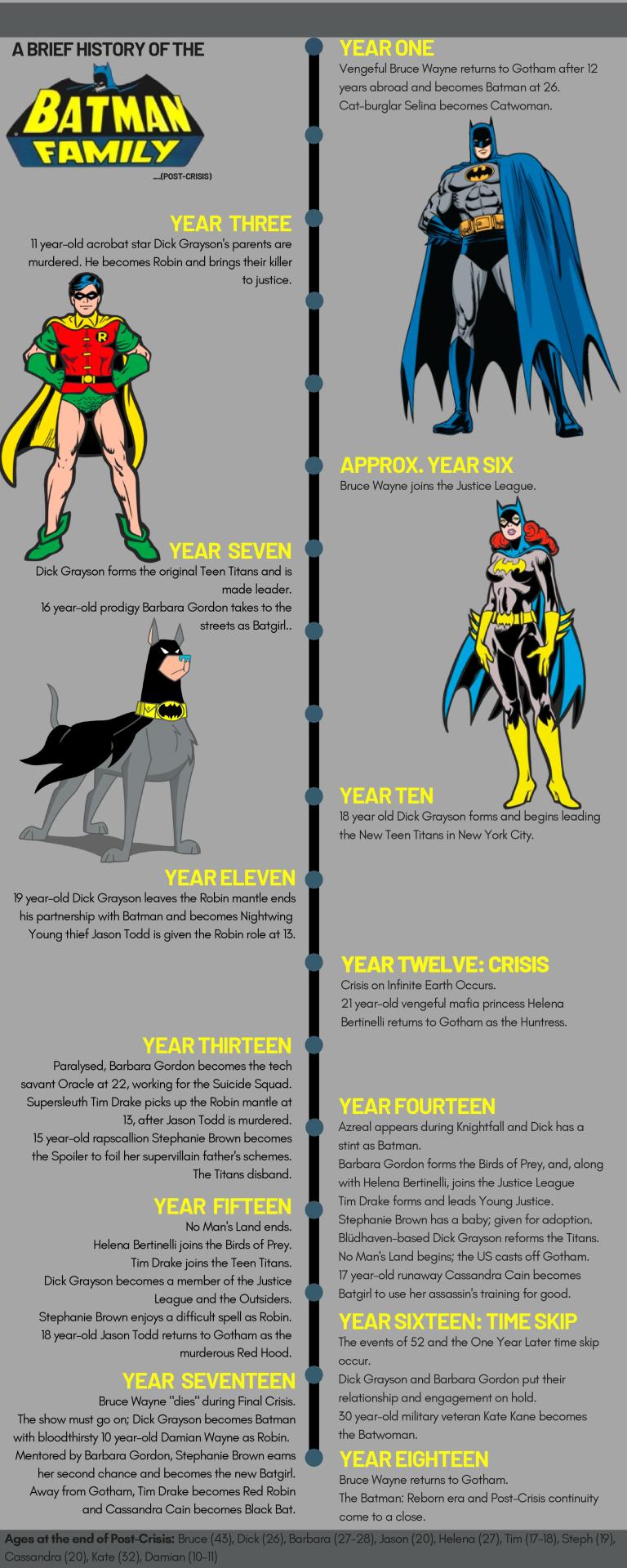
Evidence
In Batman: Year One, Bruce is said to be 25 in the January he returns to Gotham. The 1976 DC Calendar puts Bruce's birthday on the 19th of February so Bruce is 26 during his first outing as Batman in April.
Marv Wolfman's Batman: Year Three (Batman vol. 1 #436) tells us that Dick Grayson's parents die in Bruce's third year. In Batman vol. 1 #441 (also by Wolfman) Tim says that Robin started appearing around 6 months after the death of the Flying Graysons. For Dick's age when he becomes Robin, see below.
Bruce joins the Justice League before Dick forms the Teen Titans. Both these teams form before Barbara Gordon becomes Batgirl at 16 (Batgirl: Year One).
Barbara and Dick are each other's dates to their high school prom and so are less than 2 years apart in age (Detective Comics vol. 1 #871).
I suspect Dick, who was an emancipated minor, graduated high school and started college a year early, which allows Dick and Barbara to have some time as the new Dynamic Duo, as we see in Batman Family.
Dick Grayson is 18 when he forms the New Teen Titans, all of whom are also teenagers (Nightwing vol. 2 #137 by Wolfman, who also created the New Teen Titans).
Dick Grayson is 19 when he becomes Nightwing (Batman vol. 1 # 416).
21 year-old Helena becomes Huntress (Huntress: Year One #1), and interacts with Batgirl, meaning that Barbara is not yet Oracle.
Jason dies at 15, 4 months before his 16th birthday (Batman Files). This is before the New Teen Titans' third year anniversary (New Titans #71), before any of the Titans turn 22 (Deathstroke vol. 1 Annual 1), 2 years after Dick becomes Nightwing and almost 10 years before Dick's parents are killed (Batman vol. 1 #436). Dick is hence 21 during these events and 11 when he became Robin.
I also kinda like Dick being 17 years younger than Bruce because that's also the age difference between Adam West and Burt Ward from the 60s TV series.
After these events, Tim Drake becomes Robin and is 13-14 (Batman vol. 1 #441 and Robin II #1)
Soon after, Stephanie Brown is 15 when she becomes Spoiler (Secret Origins 80-Page Giant).
Stephanie is still 15 when she realises that she is pregnant (Robin vol. 2 #59) and Tim is almost 15 during this time (Secret Origins 80-Page Giant).
Cassandra Cain is 17 when she comes to Gotham during this time (Batgirl vol. 1 #1), during No Man's Land which lasts one year.
Helena’s family were killed when she was 8 and during Batman/Huntress: Cry For Blood, Tim says the murders happened roughly 15 years ago, making her roughly 23 during this storyline.
Cass turns 18 in January (Batgirl vol. 1 #39), Tim Drake turns 16 (Robin vol. 2 #116), Jason would have turned 18 in August (Detective Comics vol. 1 #790), and Stephanie is 16 when she "dies" (Batman Allies Secret Files & Origin).
Personally I'd re-arrange Tim's 16th birthday to be the last of these events four events to accommodate him still being 17 late into the Batman: Reborn, see below.
Jason soon returns to Gotham as Red Hood, not long before Infinite Crisis, 52 and One Year Later.
Following the one year time skip, Dick says it's been almost 10 years since his misadventures with Metal Eddie and Liu as a 16-17 year old (Nightwing vol. 2 #133 by Wolfman), which makes sense because he would be 25 by my math.
Stephanie returns from her time as a medical volunteer in East Africa, finishes high school and begins university during Batman: Reborn. She'd turn 19 by the end of this year by my math, which is a typical age to be begin attending university (Gotham Underground and Batgirl vol. 3 #1).
Dick calls Damian Wayne a "10 year-old" before Stephanie attends university (Batman and Robin vol. 1 #2) and Steph still calls Damian a "10 year-old" while she's in her second semester (Batgirl vol. 3 #13 and Batgirl vol. 3 #17). He might have turned 11 before the reboot.
Batwoman: Elegy (Detective Comics #858), during the Batman: Reborn year, shows that Kate was 12 when she was kidnapped and saw her mother and sister killed. This incident is also said to happen "20 years ago”, making her 32 and hence 30-31 during her first appearance in 52/One Year Later.
Tim Drake is still 17 while Steph is in her second semester of her first year at university, and it's stated that he is meant to be in his senior year at high school (Batgirl vol. 3 #13, Red Robin #17 and Red Robin #25). It's possible he turns 18 before the reboot.
Mistakes I Made
Cassandra Cain is 21 in Year Eighteen.
The "Titans disbands" in Year Thirteen was definitely a year early but it's done.
#batman#batman and robin#robin#batgirl#nightwing#spoiler#batwoman#red robin#red hood#black bat#batfam#bat family#timeline#bruce wayne#dick grayson#barbara gordon#tim drake#stephanie brown#cassandra cain#helena bertinelli#kate kane#damian wayne#jason todd#dc comics
522 notes
·
View notes
Text
In 2001-2002 there were these little bits of Kyle Rayner's Green Lantern run by Judd Winnick that were heavily focused on sexuality. Mainly about Kyle's teenage assistant Terry Berg. Terry was assigned to help Kyle by the illustration company Kyle worked for. And they became pretty good friends. Kyle at this point in time lived in SoHo (Lower Manhattan) with Jennie Lynn-Hayden or Jade the daughter of the original Green Lantern Alan Scott. Jade for background is like a living Green Lantern ring and her skin is green because of this.
So let's get into the issue I'm going to discuss. Green Lantern vol 3 #137. This released in 2001
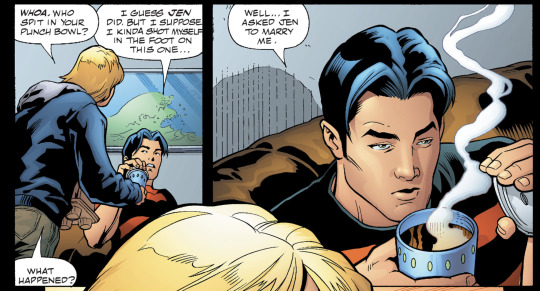

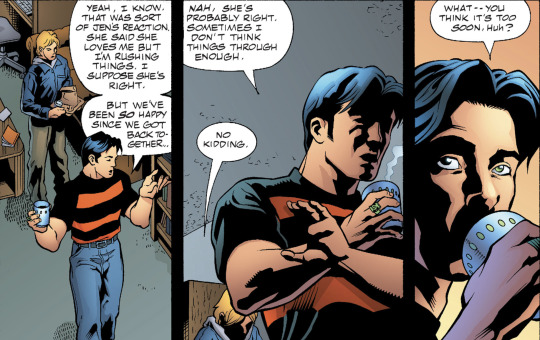
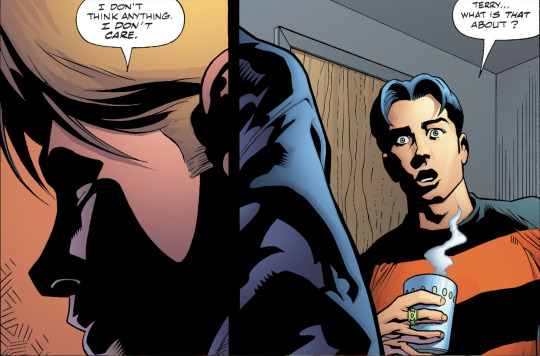
So Kyle tells Terry he proposed to Jenny and she rejected him (they had recently gotten back together and she told him to slow his roll which he got but it still stung a bit) this made Terry very standoffish.
He and Kyle argue Terry says some pretty terrible things. Kyle yells at him for it.
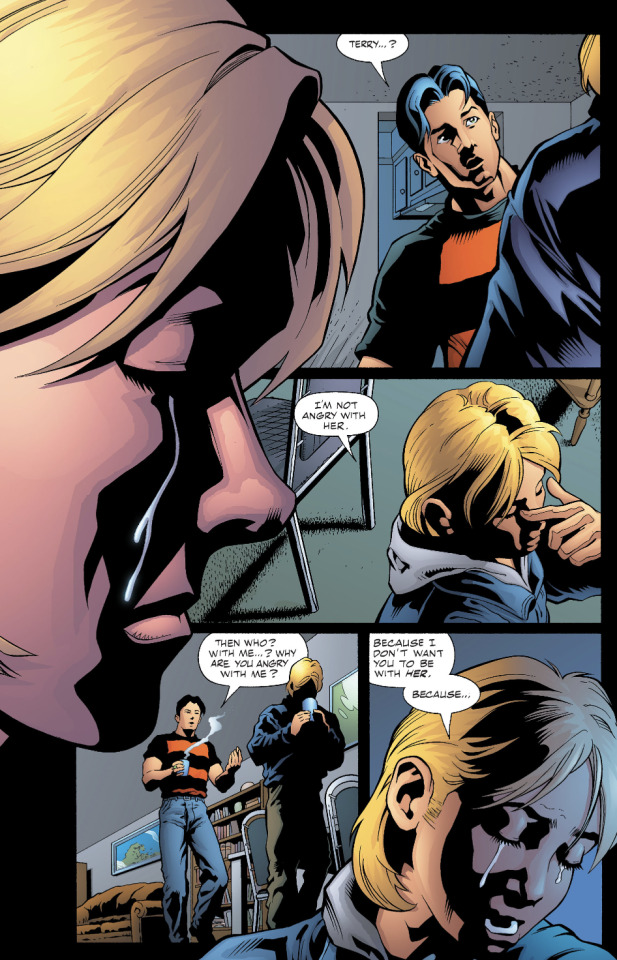
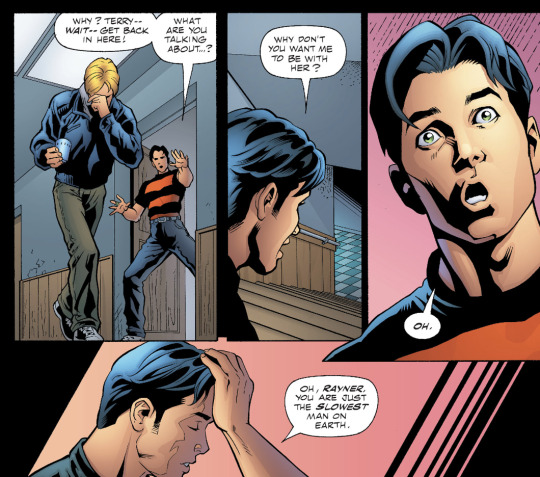
To which Terry starts crying and Kyle realizes Terry has a crush on him as he runs off.
Then Kyle's like manager? Andre or something comes and what follows is one of my favorite comic sequences ever. Modern comics on sexuality could never be this organically funny
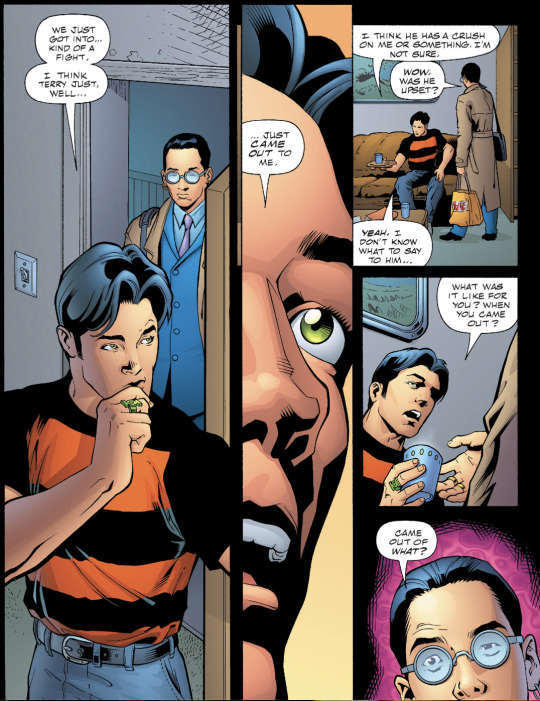

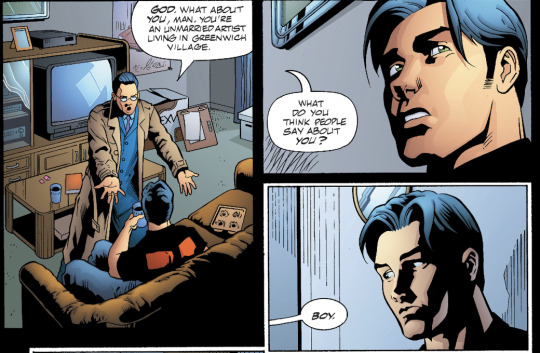
"God. What about you, Man. You're an unmarried artist living in Greenwich Village. What do you think people say about you?"
Yeah Kyle what do the people say about you?

"Have you insulted anyone else about their sexual orientation this afternoon?"
"No just two, but the day isn't over..."
Very good Kyle set your goals high



So then Kyle realizes he is the very last to figure out Terry was gay and thinks maybe he could use a therapist to talk it out with. To which Jenny calls him a moron because the only person Terry will want to talk it out with is Kyle and send him off to go tell Terry the truth. Whatever that means to Kyle




Kyle's little cross "so" he's so awkward I'm obsessed. But Kyle starts giving Terry a pep talk. "And I don't really a lot of insight on this subject. But I do know this-- it's perfectly normal to ask these questions about yourself." And he promises Terry there is nothing wrong with him and Terry is getting pretty cheered up about it.
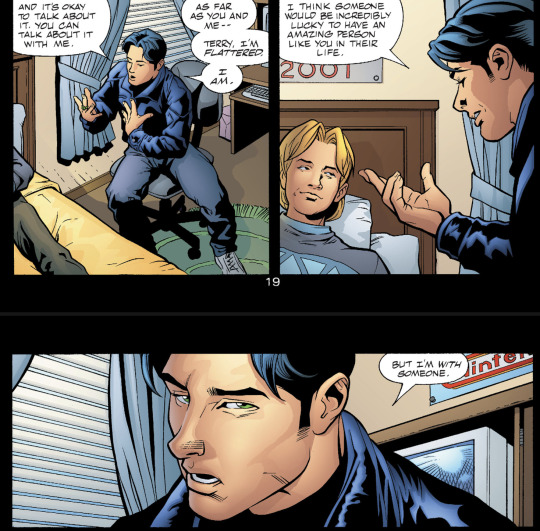

And then Kyle makes it clear. He's real flattered however
"But I'm with someone."
"And you're not gay."
"No I'm not. And you're sixteen. And, like I said, I'm with someone."
There is a point here that Kyle is rejecting Terry on the ground of being a kid and Kyle is dating someone else. Terry is the one who brings up Kyle not being gay. Which Kyle confirms he's not gay. But this entire story hinges on Kyle having never thought about this and then sitting down besides a teenager with no clue what to say other than it's normal to question this about yourself.

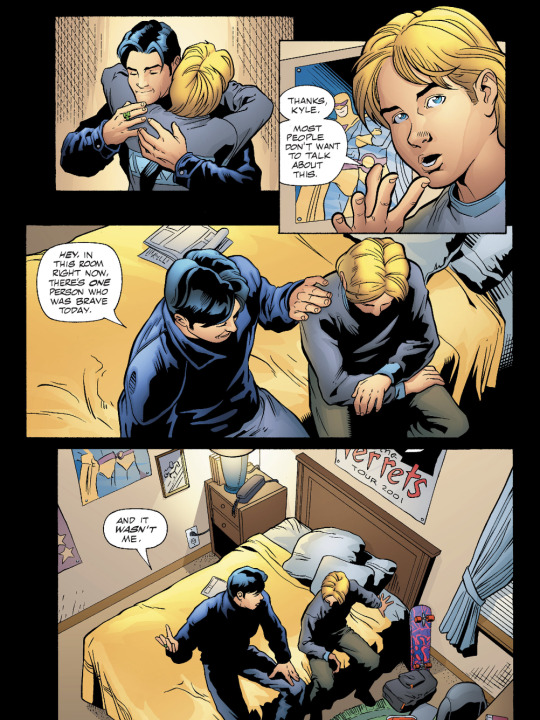
And the story ends off with Kyle and Terry joking around and a good hug and Kyle telling Terry he was very brave today.
[The next bit of Judd Winnick writing Kyle having personal feelings about sexuality as a whole is a much less feel good story. It's the Hate Crimes two issue arc in 2002. Which I discuss here if anyone is interested]
76 notes
·
View notes
Note
I'm new to comics and love beast. Is there any comics with beast that you'd recommend? There's so many xmen comics and idk where to start.
Hello there, friend! Getting into comic books is damned hard, but, thankfully, resources like Reddit, Tumblr, and Marvel Unlimited (or your pirating site of choice) all make it a lot easier to get into them these days without having to worry about being confused.
Well. You'll still be a little confused. Comic books are convoluted. But at least you'll be able to engage with them on your own terms. :) And, it's worth it. Mostly.

I'll tell you straight out that if you want some good entry points, like, this is my first X-Men comic, what do I read, I'd recommend the following:
X-Men: First Class (2006)
X-Men vol. 2 (1991)
New X-Men vol. 1 (2001)
Astonishing X-Men vol. 3 (2004)
X-Men vol. 6 (2024)
As for Beast specific recommendations? I have a ton!
For Beast as a character, being examined in his own right, I would recommend the following:
X-Men Origins: Beast - a retelling of his origin, updated with modern art and writing. Written by Mike Carey, whose work you should generally look into if you like X-Men - he focuses a lot on characters like Rogue and Xavier, but also on Beast, which is handy for our purposes!
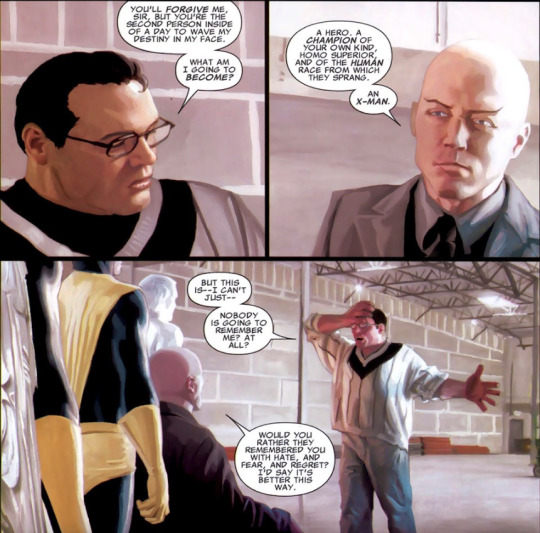
X-Men: Unlimited vol. 1 #10 and vol. 2 #10 - so, this may be somewhat confusing to a new comic reader, but comics have volumes. This is when a comic of a certain title ends, and it's then relaunched with a new creative team, usually with a very different story.
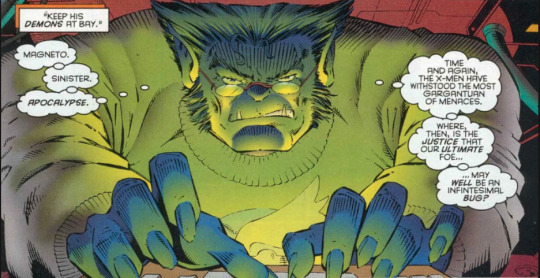
So, X-Men: Unlimited is an anthology series that tells unconnected stories that fit in other places, between other comics, and there were two different volumes of it, one in the 90s, and one in the 00s. Both volumes have an issue #10 that focuses on Beast, and I'd recommend them both! Vol. 1 #10 especially would be, in my opinion, required reading if you really want to get into Beast.

Amazing Adventures vol. 2 #11 through #17 - the first stab at giving Hank his own solo series, from back in the 70s! Don't let the age get you down, I find this series to be actually fairly modern and easy to get into, and it's a nice sort of superhero/horror blend of tones that I find really effective.

X-Men: Endangered Species - this is a Beast solo story dealing with the aftermath of the Decimation, the event where Scarlet Witch removed the powers of 99% of the world's mutants. It's quite dark, but I think it's probably one of the best examinations of the character in the medium, and it works as an excellent sequel to Unlimited vol. 1 #10. Most of the context you need is given to you in the comic, which is handy. :)
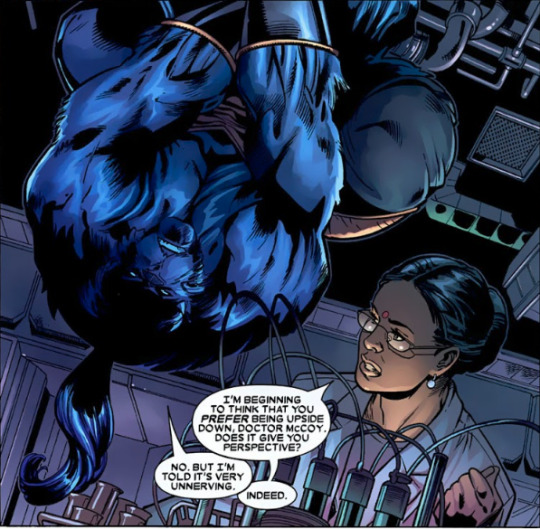
X-Men: S.W.O.R.D vol. 1 - this is kind of a team-up comic, kind of not? The context for this is reliant on reading another run that I'll be recommending, but trust me, it's worth it. This is an outrageously funny book with a good emotional core, and it really captures Beast's essence, as a dual sided goofball jokester with a heart of gold and the intellectual moralistic do-gooder who can't leave well enough alone. One of my favourite comics of all time.
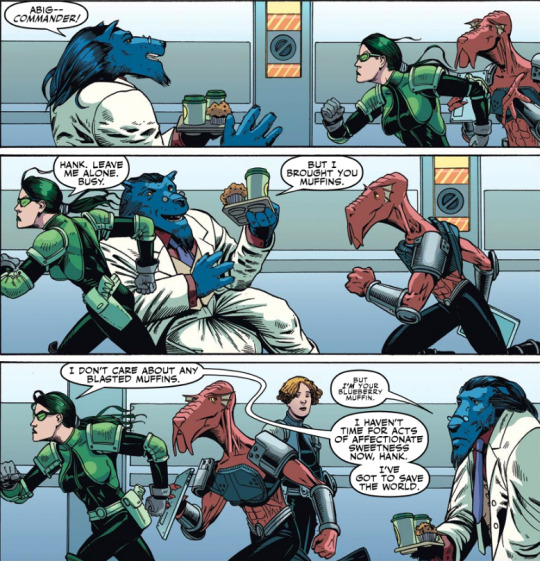
For Beast as part of a team, I would recommend the following:
X-Men: First Class - a prequel book set during the days of the Original X-Men, this series bounces between Cyclops, Angel, Iceman, Marvel Girl and Beast a fair bit, but even in issues that don't focus on Beast, he's still a part of the story and quite well written. Very slice-of-lifey, with a lot of charm to it.
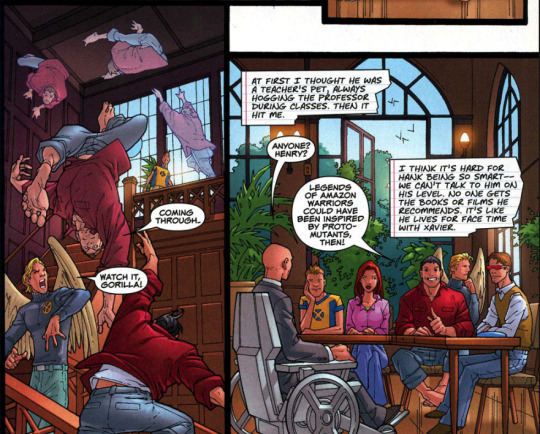
X-Men: Season One - a retelling of certain stories from the original 60s run of X-Men, this is a pretty good one-and-done graphic novel that does change a few things, but keeps the spirit intact and tells you a lot about these characters and how they relate to one another. Just watch out for Iceman's Bieber hair.

Avengers vol. 1 #137-211 - this is a pretty long run of comics that features Hank's initial tenure on the Avengers, and will occasionally require a bit of reading around to make sure that you're reading the Annuals in the right place - usually, the comic will tell you to go read Annual #6 or whatever, but if you find a lot of stuff has happened and the story jumped ahead without you, chances are, it's in an Annual. Very variable in quality, but if you want to see classic Beast in all his glory, there's some really good stuff here, especially the foundation of his lifelong friendship with Wonder Man.
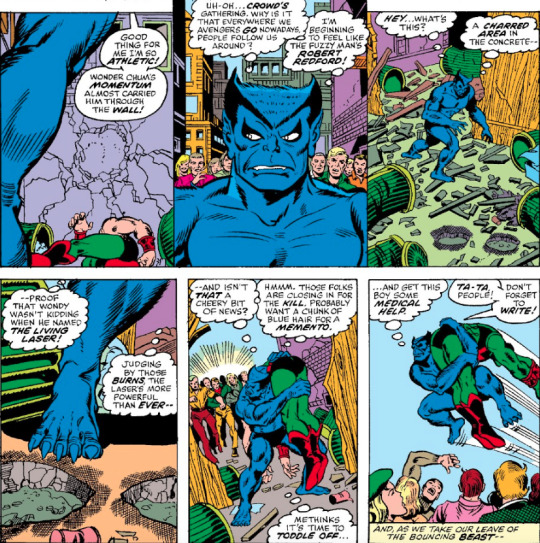
The Defenders/New Defenders vol. 1 #96-152 - probably one of my actual favourite run of comics ever. Beast joins the team a little later than #96, but if you jump in when Hank does, you'll be just a little confused, so it's best to start at #96 and go from there. Especially once Hank reforms the team to the New Defenders in #125, he basically becomes one of the very main characters and gets a lot of focus. Absolutely love this comic.
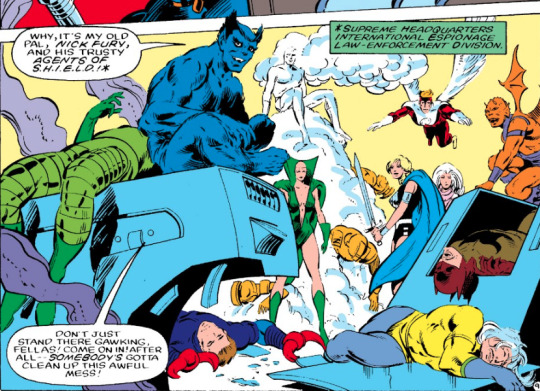
X-Factor vol. 1 #1-70 - the first six or seven issues of this are pretty bad, but it really comes into its own once it starts being written by Louise Simonson, who makes it much more soap opera, more character driven, gives all the characters a lot to do. There's a lot of crossover with other books, but usually it'll just tell you what to read if you want to know more about a part of a story in little editor's notes!

X-Men vol. 2 #1-95 - the classic 90s run; not my personal favourite, because it's pretty confusingly plotted, but if you want something that hews extremely close to the 90s cartoon, this is that to a tee, to the point where a lot of stories and characters were adapted to and from the comics directly!
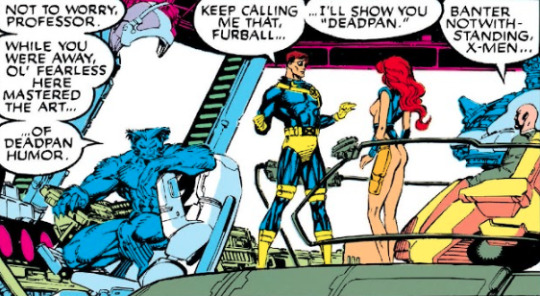
New X-Men vol. 1 #114-156 - a landmark run on X-Men by Grant Morrison, this evolves Beast into a new form and changes up his character in a new, tragic manner that, personally, is my favourite iteration of the character. Very high concept sci-fi, occasionally quite confusing and problematic, but extremely good stuff, imo, and essential for getting into modern X-Men.

Astonishing X-Men vol. 3 #1-35 - a sort of sequel to New X-Men, this is again an extremely good entry point into modern X-Men, and it's very, very classic while still progressing the story. Just a note - when you read issue #24, do NOT go to issue #25, you need to go and read Giant Size Astonishing X-Men instead, THEN go to #25. I know, it's confusing, I'm so, so, so sorry, comics are just like this. This is the comic that leads straight into S.W.O.R.D pretty much.

Wolverine and the X-Men vol. 1 #1-42 - a more zany, school focused book, Hank is part of the wider cast here, but he does get some spotlight issues, and I do enjoy him here, especially his relationship with Broo. There are crossovers with Avengers vs. X-Men and other events in here, but those events are kinda sort skippable because they're bad. If you feel confused, you can read them, but I don't necessarily recommend them.
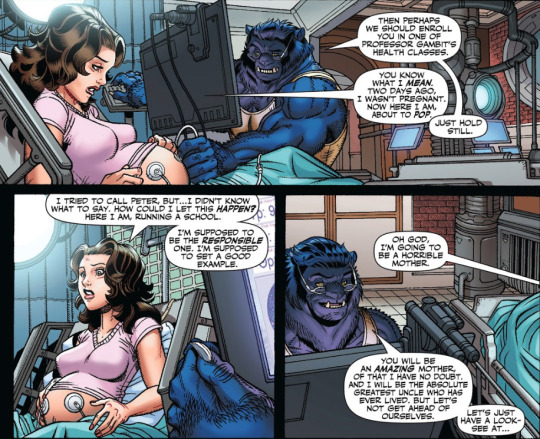
X-Men vol. 6 #1-ongoing - the current run of X-Men, written by Jed MacKay! To put it very bluntly, Beast went through about a decade of being quite badly written and slowly turned into a scummy villain through the recent Krakoa era, which I was not a fan of. There are individual issues between 2013 and 2024 that I can recommend, but if you like Beast, I would not recommend reading them, because I think that they are pretty bad and not fun to read. This is me being kind. But the new series picks up after that's all fixed, and Beast is getting a lot to do in this series, so I'd recommend it!

X-Men: From the Ashes Infinity Comics #15-18 - a supplementary comic that focuses on Beast, best read alongside the above X-Men run I recommended; it can give you all the context you need for where Beast is at, and why he's feeling the way that he is. A very, very good read, way exceeded my expectations, and I'm really pleased I can actually recommend modern comics for Beast again!
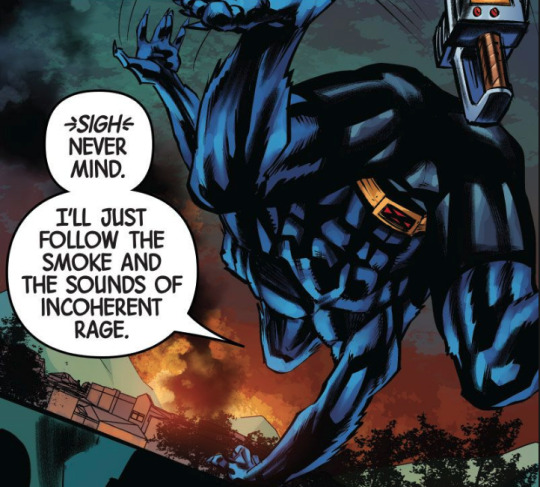
These are the main runs I would recommend! There's a lot more, if we want to get esoteric, and I'm sure I'm missing out on a lot of material - Beast has been around for 60 years, he's been in a LOT of stories - but if you want to get stuck into X-Men comics and really immerse yourself into the world and the stories, there's a lot of really good material here!
Welcome to the X-Men comics, friend! Hope you survive the experience!
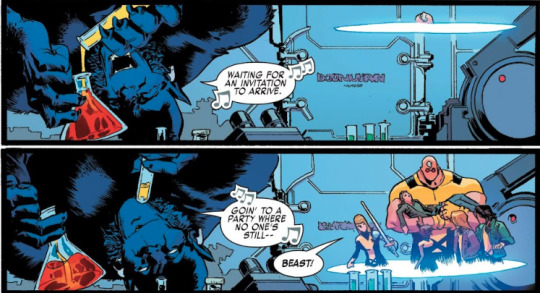
25 notes
·
View notes
Text
















[ID: a compilation of panels from “yona of the dawn”, focused on parallels between hak and yona (left column), and gija and jaeha (right column). descriptions of each panel are included in alt text. end ID.]
ch. 75 & 204; 63; 108 & 107; 134 & 105.1; 107 & 95; 137 & 130; 226 & vol 19 title page; 254 & 133
-> part 1
#some of these are sillier parallels i left out of part 1 and some i connected the dots for after posting part 1#so it’s kinda all over the place tonally. but who cares. i’m having fun <3#love how many of these occur within at most a few pages of each other btw#akayona#gijaeha
64 notes
·
View notes
Text
(PSA: anyone who tags this with "jaytim" or any other variant will get blocked.)

Rebirth Detective Comics vol 1

Rebirth Detective Comics vol 5

Robin 80th Anniversary 100-Page Super Spectacular

Tim Drake: Robin # 3





Knight Terrors: Robin #2

Batman (2016) #137
#dc#comics#dc comics#comic books#comic pages#comic panels#batfam#batfamily#batkids#jason todd#red hood#the red hood#tim drake#red robin#batbros#batsiblings#bat brothers#jason and tim#jason & tim
165 notes
·
View notes
